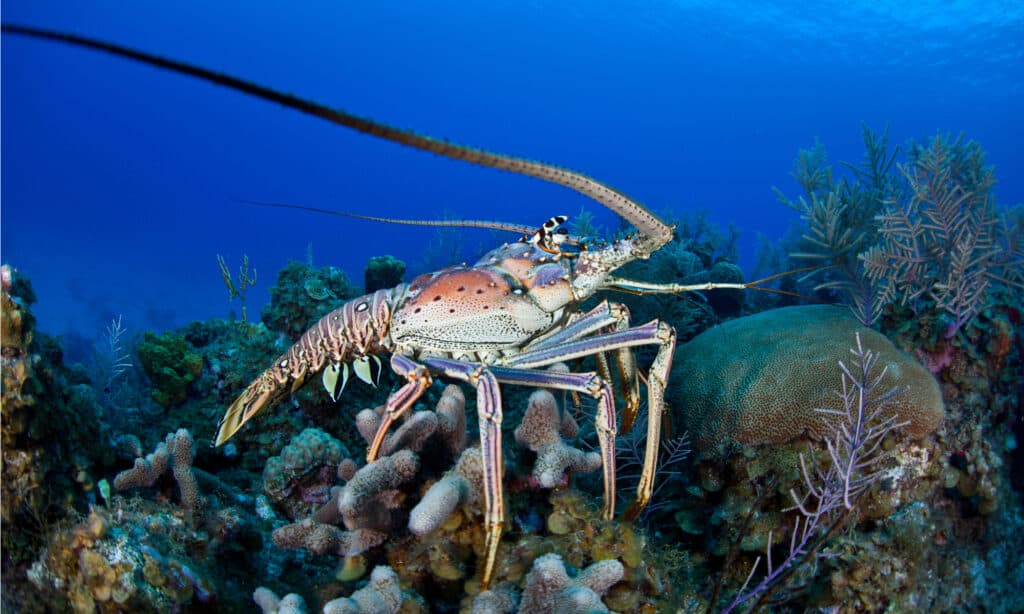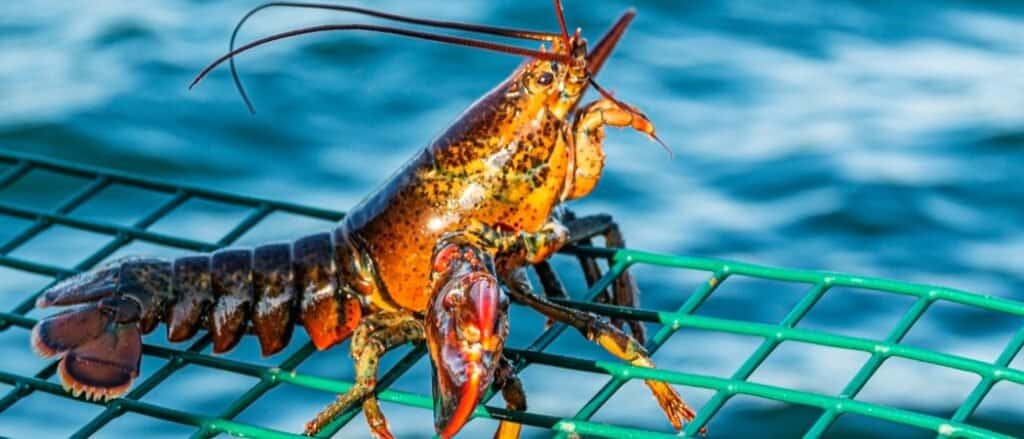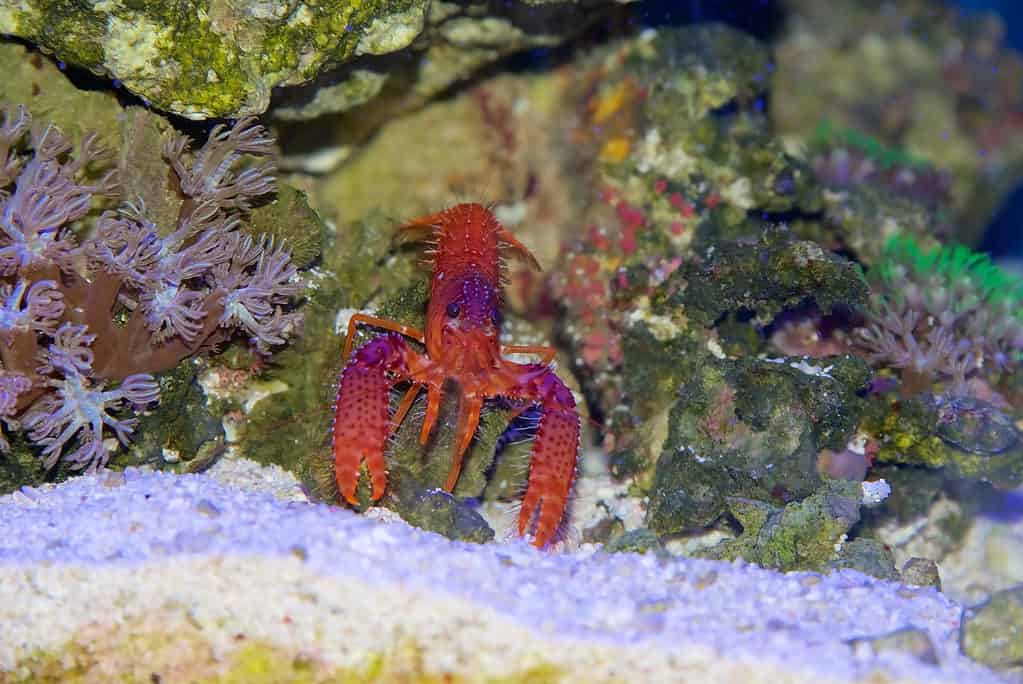Members of the vast and diverse crustacean family, lobsters are amazing creatures that have roamed the seas for over 480 million years. Lobsters are invertebrates, which means they don’t develop a spine or a backbone. However, they are recognized for their thick, protective shells known as exoskeletons.
These creatures have a fascinating story, and as time has passed, popular rumors have spread about their mating habits. Namely, there is a common misconception that lobsters mate for life. You may be asking yourself, “Where did this rumor come from?” Read on to discover the origins of this story and more incredible facts about these animals.
Who Started This Rumor?

Lobsters have roamed the seas for over 480 million years.
©Gilmanshin/Shutterstock.com
This rumor originated from the iconic sitcom Friends. Phoebe Buffay, one of the main characters in the show, once said, “It’s a known fact that lobsters fall in love and mate for life.” Unfortunately, this is merely a fable. While this is a disappointing revelation for some, they’d be happy to know that some members of the animal kingdom do engage in pair bonding. The mighty gray wolf, for example, is known to practice monogamy and mate with a partner for life. Lobsters might not cling to a lifelong partner, but they do exhibit very interesting mating, reproductive, and developmental habits that we will discuss in this article. Prepare to learn more about these behaviors below.
Female Lobsters Make the First Move

Lobsters are invertebrates, which means they don’t develop a spine or a backbone.
©OSDG/Shutterstock.com
To select the most dominant male, female lobsters will initiate the mating process. This process typically occurs after a female has molted, which means she has shed her shell. Before mating, a female must spot a capable suitor — one who battles it out for the best, most viable burrow — then, she will entice the male by secreting her pheromones at the entrance of his coveted new home. The male will invite the female into his burrow once he detects her scent, meaning her pheromones produce the intended effect.
Lobster Mating and Reproduction

Male lobsters have swimming limbs known as pleopods.
©Ethan Daniels/Shutterstock.com
Molting is a crucial part of the mating process. A female lobster must shed her exoskeleton to begin this phase, which takes place in a male’s underwater burrow. Once she sheds her protective layer, the male pierces her abdomen with his first pair of pleopods (swimming limbs). Then, he’ll deposit sperm packets into her storage chamber known as a seminal receptacle.
Female lobsters can carry live sperm for up to two years. When a female deems the time is right, she will release her eggs to be fertilized. Fun fact: female lobsters can carry up to 80,000 eggs! Once her eggs are fertilized, she will attach and carry them under her tail for approximately 10 months.
When a female lobster is ready to give birth, she will travel to warm waters and find a sand bank to bury her eggs, where her babies will eventually hatch two months later.
Male Lobsters Signal Other Females After Mating

Males will use their pleopods to fan a chemical substance into the environment to attract females.
©WoodysPhotos/Shutterstock.com
While cohabitating, or living together in an intimate relationship, male lobsters will use their pleopods to fan a chemical substance into the environment. They do this in hopes of attracting other female mating partners to their burrows. A prospective female can start cohabitating with a male immediately after he has finished mating with his previous partner.
Juvenile Lobsters Take Years to Develop

Juvenile lobsters go through numerous molding phases over the course of 5-7 years.
©PAUL ATKINSON/Shutterstock.com
Interestingly, juvenile lobsters do not resemble typical adult lobsters. They go through numerous molding phases over the course of 5-7 years. In fact, this process can occur up to 25 times and is vital to a juvenile’s growth. Once they leave their shell, they will absorb water, which helps them grow. The juvenile will reach legal adult size — around 1 pound — after this long, seemingly tedious stage of development. Once they reach adulthood, lobsters molt less frequently. Adult lobsters usually shed once a year.
It Is Illegal to Harvest Pregnant Lobsters in Maine
Due to overfishing, harvesting regulations in Maine ensure viable female lobsters are protected. A female can carry 10,000 eggs per pound of body weight. Unfortunately, only two in every 50,000 eggs reach legal harvesting (catching) weight. While survival has become increasingly difficult, these laws ensure female lobsters remain an essential part of their ecosystem to protect future generations.
The photo featured at the top of this post is © RLS Photo/Shutterstock.com
Thank you for reading! Have some feedback for us? Contact the AZ Animals editorial team.







